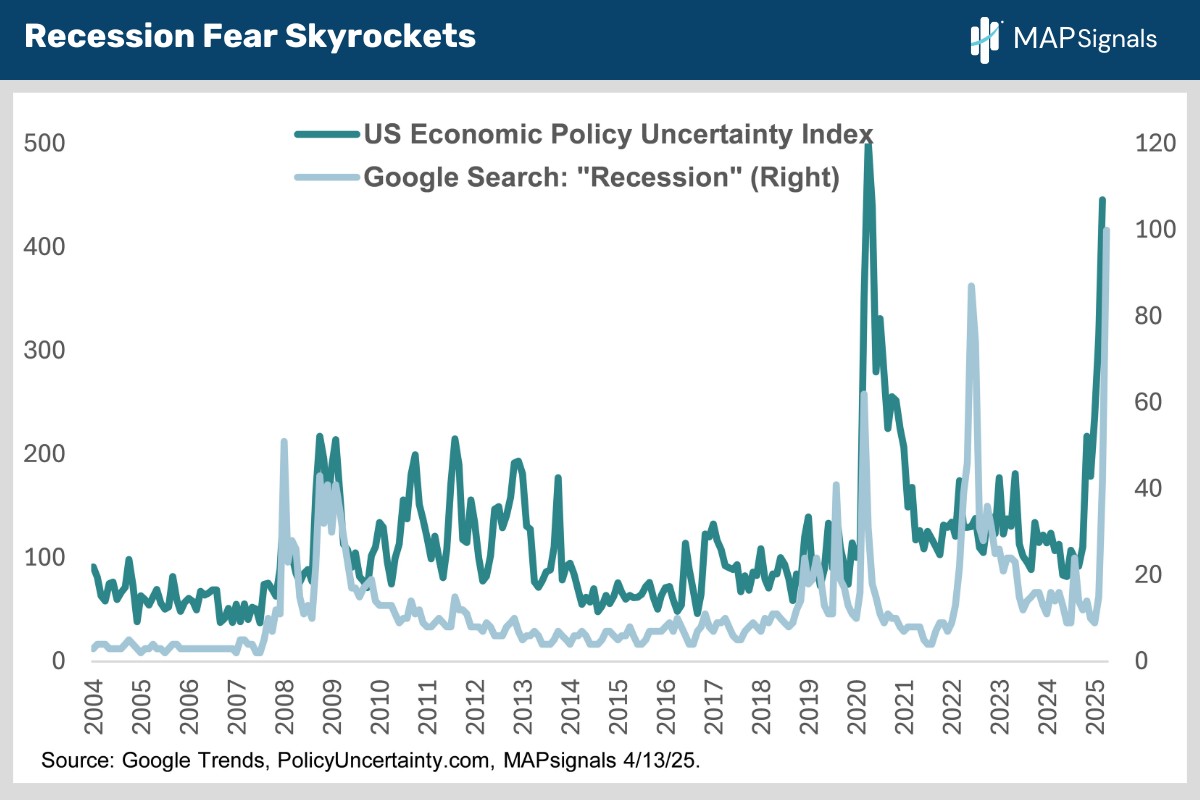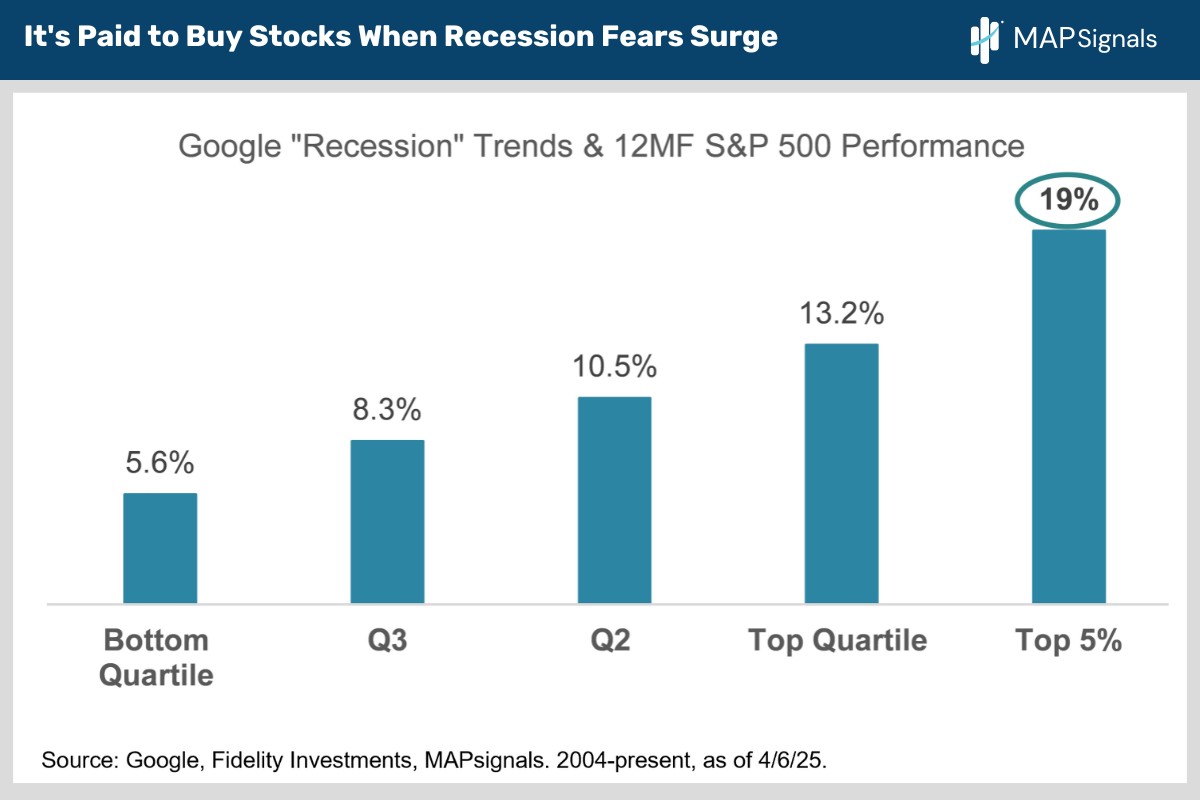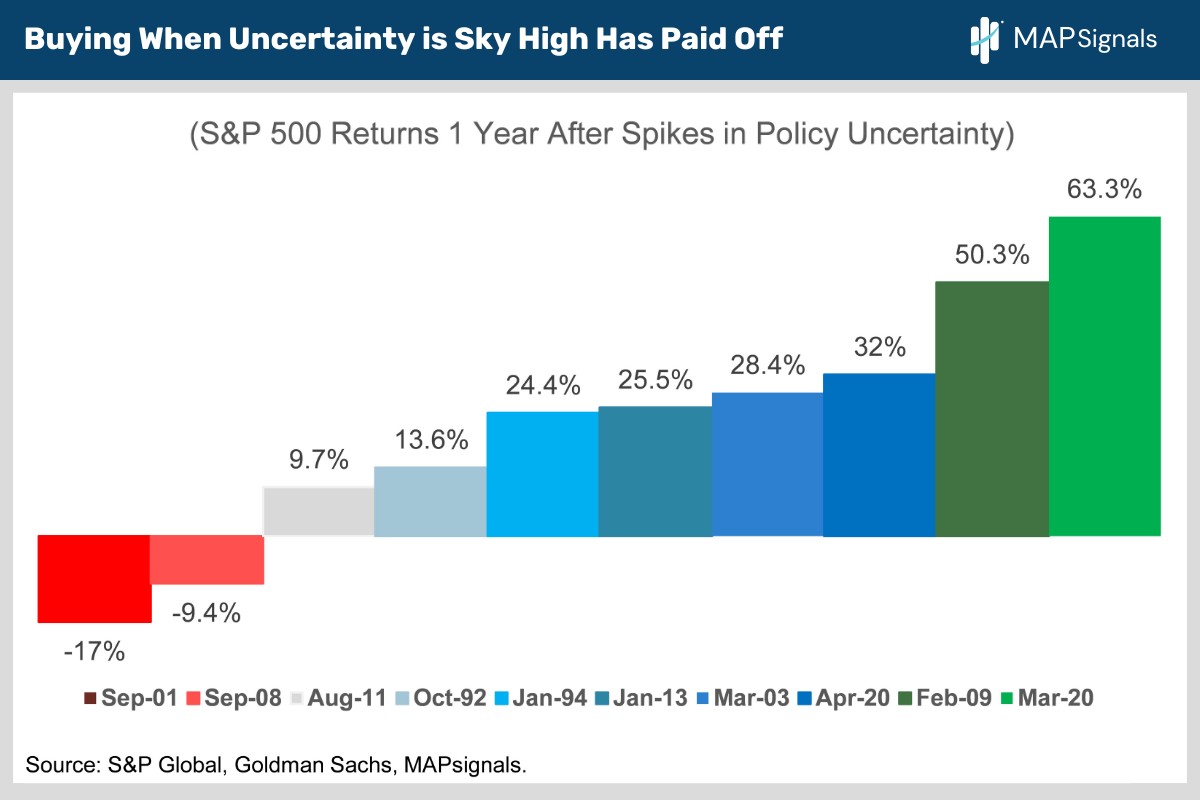
Recession Obsession
Gaming out all the trade war twists and turns is next to impossible.
That said, after the S&P 500’s quick 21% drop, single name opportunities have emerged.
We’ve isolated 30 stocks that can thrive in tariff uncertainty.
In this market, you need to be choosy. Buying the S&P 500 is full of risks. A nasty, earnings bruising recession tops the list.
2025’s murky macro requires a margin of safety. That means sticking with companies that can best weather tariffs.
Today, we’re going to unpack 2 reversion signal studies that highlight why you’ll want to selectively put money to work during rare moments like these.
We’ll also shed light on where the courts, congressional approval and the Fed fit into all of this trade war turmoil.
Then, as a bonus, we’ll unlock a sector-diversified list of 30 domestic-leaning stocks with the pricing power and high profit margins to weather the tariff turmoil.
Let’s discuss the big fear in the room: recession.
Recession Obsession
Fear is in the air. Economic policy uncertainty is the highest since the height of the COVID-19 Pandemic. Similarly, google searches for the word “recession” are at all-time highs (chart).

At MAPsignals, we love to push against the crowd. Here’s a contrarian take on all the doom and gloom.
Google search data only goes back to 2004, but there’s a clear pattern: the more “recession” creeps into the public consciousness, the more likely stocks will be higher over the next 12 months (chart).
Below breaks down “recession” search volumes into quartiles. The more searches, the better forward returns.
It should come as no surprise that whenever the crowd obsesses about something, it rarely plays out as expected.
When you slice the top 5% of recession search volumes, the S&P 500 has gained an average of 19% in the 12 months that followed:

It’s a similar story when it comes to uncertainty. We analyzed every major spike in economic policy uncertainty over the last 25 years.
Buying when uncertainty is sky-high has been a winning strategy. The S&P 500 has averaged a 22.1% gain a year after uncertainty spikes (chart).

This data highlights how, over time, uncertainty rarely stays elevated forever. And a path forward for equities emerges.
So, keep buying high-quality stocks on these steep down days.
History shows it’ll pay off.
Now let’s pivot to a question that’s come up recently regarding tariffs.
Can the courts intervene?
Courts to the Rescue?
History isn’t the only reason to buy the dip.
There’s little chance President Trump could get Congress to pass a law authorizing his sweeping tariff agenda. Republicans’ thin majorities and dissention in the Senate and House over tariffs make this clear.
On April 14, the Trump Administration was sued by a group of businesses in the US Court of International Trade over the legality of recent tariffs in the absence of prior Congressional approval.
If the courts rule the Trump Administration needs congressional approval to implement tariffs stocks will surge on the assumption tariffs will either fail to win congressional approval or be heavily diluted.
Here’s why the courts are likely to force President Trump to get Congressional approval for tariffs:
To enact his tariff measures, President Trump cited a national emergency that gives the White House broad authority to act unilaterally, without Congress, under the 1977, International Emergency Economic Powers Act (IEEPA).
Since 2022 the Supreme Court has been clear: When an agency (or the executive) claims authority to resolve a ‘major question’ - a policy issue with vast economic and political significance - it must point to clear congressional intent.
Tariffs—which reshape global trade, potentially cost American consumers billions, and disrupt entire industries—certainly qualify as major questions.
President Trump’s tariffs aren’t regulatory tweaks; they are transformative economic policies with far-reaching consequences. The IEEPA text offers no clear mandate for such sweeping actions.
Is the Fed Put Still Alive?
Inflation is tame but many worry tariff driven inflation worries will keep the Fed from cutting rates.
The bond market disagrees.
The Fed funds futures market is pricing in two or three rate cuts by the end of 2025, likely beginning in June. The 2-year treasury yield – a proxy for the Fed funds rate – has fallen to 3.8% from 4.4% at the beginning of the year.
We’ll side with the bond market. The Fed put is real.
30 Stocks that can Thrive in Tariff Uncertainty
We’ve made the macro case why investors should selectively buy dips. Now, let’s tackle portfolio construction.
If you aren’t a PRO member, and are a serious investor, get started today to access the below report. It’s a beauty!
Given that tariff uncertainty is the prime driver of stock market volatility, it makes sense to target companies best positioned to weather the tariff turmoil.
Companies with steady earnings always outperform when uncertainty rises. Stocks in counter-cyclical sectors are an obvious choice as are more domestic businesses.
But we’re digging deeper.
Strong pricing power and high margins are the keys to shielding profits from elevated tariffs.
This article is accessible to MAP Pro memberships.
Continue reading this article with a MAP Pro Subscription.
Already have a subscription? Login.
